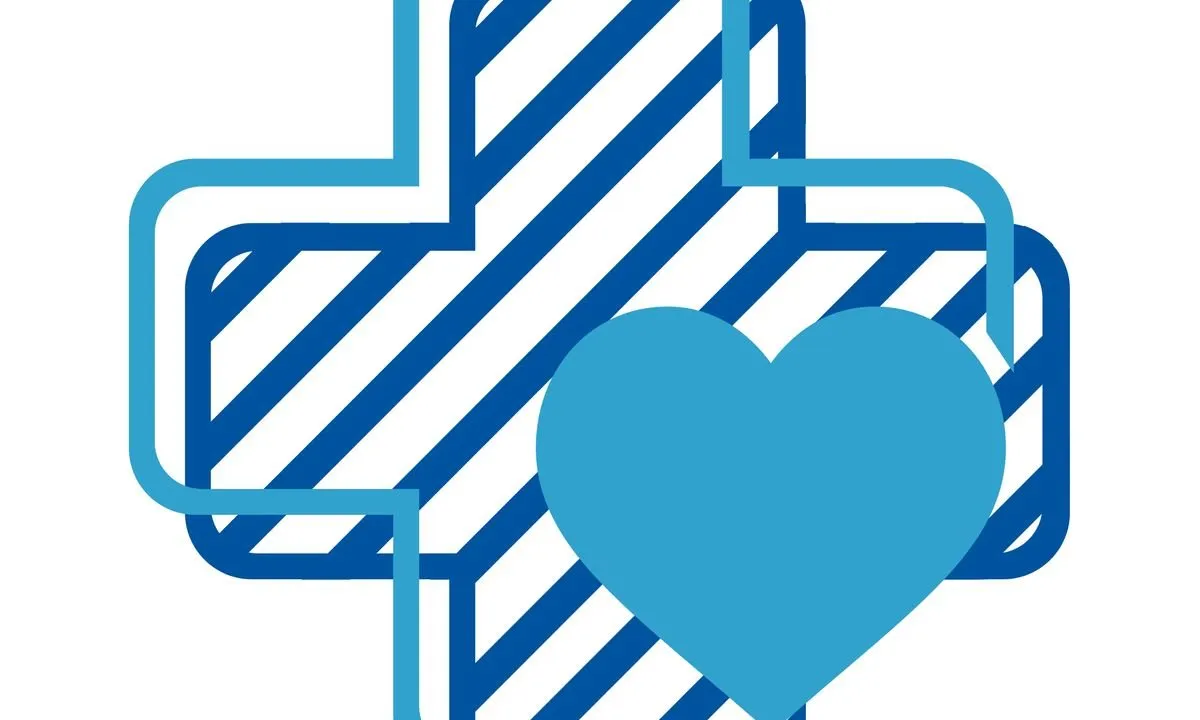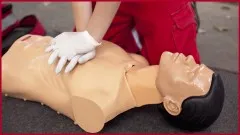
Stayin' Alive! First aid in Emergency 
This course provides an introduction to emergency first aid, teaching students the basic actions to take in an emergency situation. It covers topics such as cardiopulmonary resuscitation, airway obstruction, bleeding, injuries, trauma, physical factors exposure, and life-threatening conditions. Through pictures and videos from the Simulation Center at Kazan Federal University, students will gain the skills to identify and respond to life-threatening conditions. Upon completion, students will be able to provide correct first aid. ▼
ADVERTISEMENT
Course Feature
![]() Cost:
Cost:
Free
![]() Provider:
Provider:
Coursera
![]() Certificate:
Certificate:
Paid Certification
![]() Language:
Language:
English
![]() Start Date:
Start Date:
14th Mar, 2022
Course Overview
❗The content presented here is sourced directly from Coursera platform. For comprehensive course details, including enrollment information, simply click on the 'Go to class' link on our website.
Updated in [May 25th, 2023]
This course, Stayin' Alive! First Aid in Emergency, introduces the basic actions that should be performed by eyewitnesses right at an emergency scene. It consists of five blocks: first aid for heart arrest (Cardiopulmonary resuscitation), first aid for airway obstruction and drowning, first aid for bleeding, injuries, and trauma, first aid for physical factors exposure, and first aid for life-threatening conditions such as stroke, epilepsy, and heart attack. Educational material includes pictures and videos made at the Simulation Center at Kazan Federal University to better understand the topics. Upon completion of the course, participants will be able to identify life-threatening conditions, explain the reasons lead to their development, and provide correct first aid.
[Applications]
After completing this course, it is recommended that the learner apply the knowledge gained by practicing the skills learned in a safe environment. It is also recommended that the learner stay up to date on the latest first aid techniques and protocols by attending refresher courses and seminars. Additionally, the learner should be aware of the local emergency services and their contact information in case of an emergency.
[Career Paths]
1. Emergency Medical Technician (EMT): An EMT is a healthcare professional who responds to medical emergencies and provides basic medical care. They are trained to assess a patient's condition and provide life-saving interventions such as CPR, airway management, and bleeding control. The job outlook for EMTs is expected to grow by 11% over the next decade, making it a great career choice for those interested in the medical field.
2. Paramedic: Paramedics are healthcare professionals who provide advanced medical care in emergency situations. They are trained to assess a patient's condition and provide advanced interventions such as administering medications, performing advanced airway management, and providing advanced cardiac life support. The job outlook for paramedics is expected to grow by 7% over the next decade, making it a great career choice for those interested in the medical field.
3. Emergency Room Nurse: Emergency room nurses provide care to patients in emergency situations. They are trained to assess a patient's condition and provide interventions such as administering medications, performing advanced airway management, and providing advanced cardiac life support. The job outlook for emergency room nurses is expected to grow by 12% over the next decade, making it a great career choice for those interested in the medical field.
4. Emergency Medical Dispatcher: Emergency medical dispatchers are responsible for receiving and responding to emergency calls. They are trained to assess a patient's condition and provide pre-arrival instructions such as providing CPR instructions and providing instructions on how to control bleeding. The job outlook for emergency medical dispatchers is expected to grow by 8% over the next decade, making it a great career choice for those interested in the medical field.
[Education Paths]
1. Emergency Medical Technician (EMT) Degree: An EMT degree is a great way to learn the basics of emergency medical care. This degree program typically includes courses in anatomy, physiology, medical terminology, and emergency medical procedures. It also includes hands-on training in the use of medical equipment and techniques. With an EMT degree, you will be able to provide basic medical care in emergency situations. This degree is becoming increasingly popular as the demand for emergency medical technicians continues to grow.
2. Paramedic Degree: A paramedic degree is a more advanced degree than an EMT degree. This degree program includes more in-depth courses in anatomy, physiology, medical terminology, and emergency medical procedures. It also includes more hands-on training in the use of medical equipment and techniques. With a paramedic degree, you will be able to provide advanced medical care in emergency situations. This degree is becoming increasingly popular as the demand for paramedics continues to grow.
3. Nursing Degree: A nursing degree is a great way to learn the basics of medical care. This degree program typically includes courses in anatomy, physiology, medical terminology, and nursing procedures. It also includes hands-on training in the use of medical equipment and techniques. With a nursing degree, you will be able to provide basic medical care in both emergency and non-emergency situations. This degree is becoming increasingly popular as the demand for nurses continues to grow.
4. Emergency Management Degree: An emergency management degree is a great way to learn the basics of emergency response and management. This degree program typically includes courses in emergency planning, disaster response, and emergency management. It also includes hands-on training in the use of emergency management techniques. With an emergency management degree, you will be able to provide emergency response and management in both emergency and non-emergency situations. This degree is becoming increasingly popular as the demand for emergency managers continues to grow.
Course Syllabus
Cardiopulmonary resuscitation (CPR)
Welcome to the first week of Stain' Alive! First Aid in Emergency! In our first lesson, we cover the structure and functional relationship between cardiovascular and respiratory systems. We will go through the first aid for heart arrest when there is an absence of consciousness and breathing. Different lessons cover different situations: CPR to adult, CPR to a child, CPR to a pregnant woman. The first week also introduces AED, how to use it properly. We will end the week by understanding how to put the victim in a safe position after restoring.First aid for airway obstruction and drowning
What if somebody has choked and there is only you nearby? In the second week, we will talk about the causes of a foreign object entering the respiratory tract. We will look at types and symptoms of airway obstruction and particularly stop on the first aid actions. We will end the week by learning how to get a drowning victim out of the water and provide help for restoring.First aid for bleeding, wounds, and trauma
Injuries happen pretty often. They are formed due to falls, car accidents, heavy lifting, sloppy movements, extreme environmental action, and other factors. In the third week, we will cover the most common types of injuries, such as bleedings, wounds, and traumas. One topic will be devoted to the rules for correct extraction of the victim out of the vehicle.First aid for physical factors affection
Each of us faces physical factors in everyday life: hot weather in the summer, freezing temperatures during winter, electricity at home. In week 4, we will discuss their affection for the human body after overexposure. We will see how high and low temperatures cause injuries, how electricity damage dozens of people. Each topic traditionally includes first aid algorithms for each condition.First aid for other emergencies
Congratulations! You've reached the final week. Obviously, it is impossible to cover all possible emergency cases in one course. However, we try to stop at the most frequent situations which can happen at any age. Therefore, in the last week, we will talk about stroke, heart attack, fainting, and epilepsy. We will take a look at the reasons, typical symptoms, and first aid for these conditions. Enjoy the last week of the Stain' Alive! First Aid in Emergency!Course Provider

Provider Coursera's Stats at AZClass
Discussion and Reviews
0.0 (Based on 0 reviews)
Explore Similar Online Courses

GMAT Sentence Correction

Game Asset Creation With Houdini

Python for Informatics: Exploring Information

Social Network Analysis

Introduction to Systematic Review and Meta-Analysis

The Analytics Edge

DCO042 - Python For Informatics

Causal Diagrams: Draw Your Assumptions Before Your Conclusions

Whole genome sequencing of bacterial genomes - tools and applications

First Aid and Bloodborne Pathogens (BBP)

2 How To Save A Life - Advanced

Basic Life Support (BLS)
 Related Categories
Related Categories
 Popular Providers
Popular Providers
Quiz
 Submitted Sucessfully
Submitted Sucessfully
1. What is the main goal of this course?
2. What are the 5 blocks of this course?
3. What educational material is used in this course?


Start your review of Stayin' Alive! First aid in Emergency